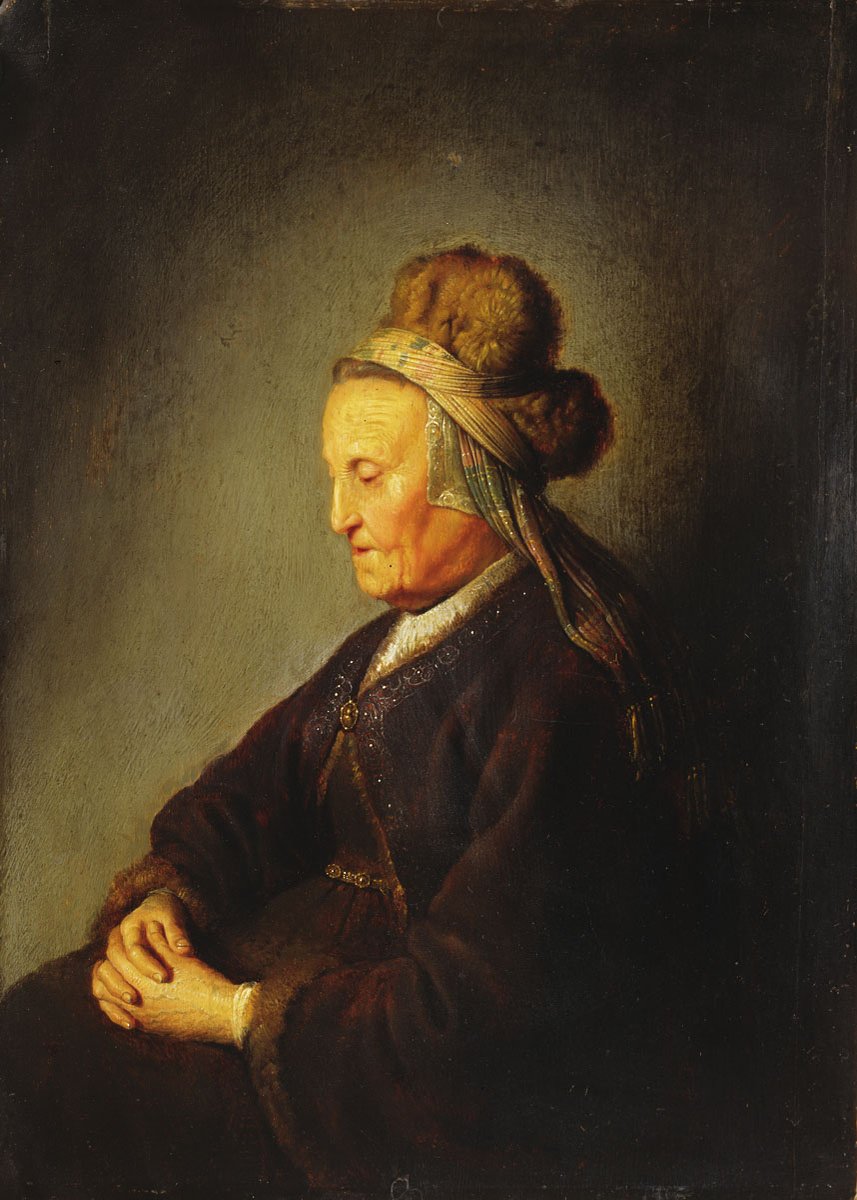
An Old Woman (“Rembrandt’s Mother”)
Old Master Paintings
Michelangelo Hall - 20 September 2019 - 5 January 2020
The dossier exhibition commemorating the 350th anniversary of Rembrandt’s death will draw attention to the artist as a master and teacher. Each one of the works displayed here comes from the Museum of Fine Arts’ collections of Prints and Drawings and Old Master Paintings.
The Department of Prints and Drawings preserves more than forty sheets from the drawing oeuvres of Rembrandt and his followers, while almost all of the master’s etchings and those by his pupils can be found in this collection.
In line with international trends, which place the stylistic distinctions between the master’s pupils at the focus of research, the present exhibition seeks to show Rembrandt’s drawings and etchings in the environment of his pupils’ works as a tribute to the 350th anniversary. The displayed material is arranged according to the areas of drawing education – portrait, nude, landscape, figure sketch and narrative compositions–and allows an insight into Rembrandt’s activity as a teacher and into the operation of his workshop. Sheets by Ferdinand Bol, Gerbrand van den Eeckhout, Samuel van Hoogstraten and others preserved in the Budapest collection are exhibited alongside the drawings and etchings in the master’s own hand, thus providing a unique opportunity for discovering parallels and in some cases exciting differences.
Similarly to the Carracci Academy in Bologna, Rembrandt’s workshop – which attracted almost fifty members according to the records – operated as a free school mostly attended by accomplished artists who had already completed their basic training. Their objective was to collaborate with the master in order to perfect and hone their knowledge. They mastered Rembrandt’s drawing style and used drawing techniques, such as pen and wash, brush drawings with wash, brown ink, and chalk. Working in Rembrandt’s environment, they had the opportunity to practice drawing after life, as can be seen in the etchings in the museum’s collection of Prints and Drawings (e.g. Artist Drawing a Model, Two Male Nudes and a Woman with a Child in the Background).
Above all, Rembrandt encouraged his pupils to find their own compositional methods instead of slavishly copying those of others, and they practiced this by making variations based on Rembrandt’s works. Ferdinand Bol’s drawing (The Angel Appears to Manoah and his Wife), for example, is a version of a composition by Rembrandt with the same theme, preserved in Rotterdam (Museum Boijmans-van Beuningen).
The exhibition is curated by Bernadett Tóth, an art historian at the Museum of Fine Arts’ Department of Prints and Drawings.
Prints and drawings are especially light-sensitive artworks. If exposed to light too long or often, they lose their colour and become faded. UV radiation in natural light is the most damaging to these sheets; therefore, they are displayed here for a strictly limited time, placed under glass with a UV filter and illuminated with artificial light with a maximum illuminance of 50 lux. For this reason, no photography is allowed at the exhibition.
The displayed works can be viewed below:
Drawings and Etchings from the Collections of the Museum of Fine Arts, Budapest
Opening hours: Tuesday – Sunday 10:00 am – 5:45 pm, closed on Mondays
Full price: 3400 HUF
In his landscape drawings distinguished by acute sensitivity of light and shade effects and atmospheric conditions, Rembrandt primarily depicted the Dutch landscape. Following the tradition of earlier Haarlem masters, he traversed the Dutch countryside as well as the environs of Amsterdam, sketching what he saw during his walks. His students often accompanied him on his motif-collecting trips, among them Abraham Furnerius, whose drawing titled Village Street with Trees and a Church clearly follows Rembrandt’s compositional method.
An outstanding piece of our collection is a carefully elaborated drawing with wash, attributed to Barent Fabritius, which preserves an earlier version of Rembrandt’s masterpiece Susannah and the Elders (Berlin, Gemäldegalerie). As Rembrandt reworked this painting many times, the Budapest sheet is an art historical document of especial value.
Unlike the members of the preceding generation of artists and his contemporaries – Pieter Paul Rubens and Anthony van Dyck –, Rembrandt did not travel to Italy. However, thanks to his enormous collection of prints, he was able to thoroughly study works by Leonardo, Raphael and Titian. In regard to landscapes, his interest in Venetian masters is attested to by a landscape drawing by a 16th-century Venetian master which was included in Rembrandt’s collection and bears corrections by the master.
20 September 2019 - 5 January 2020
Online ticket purchase